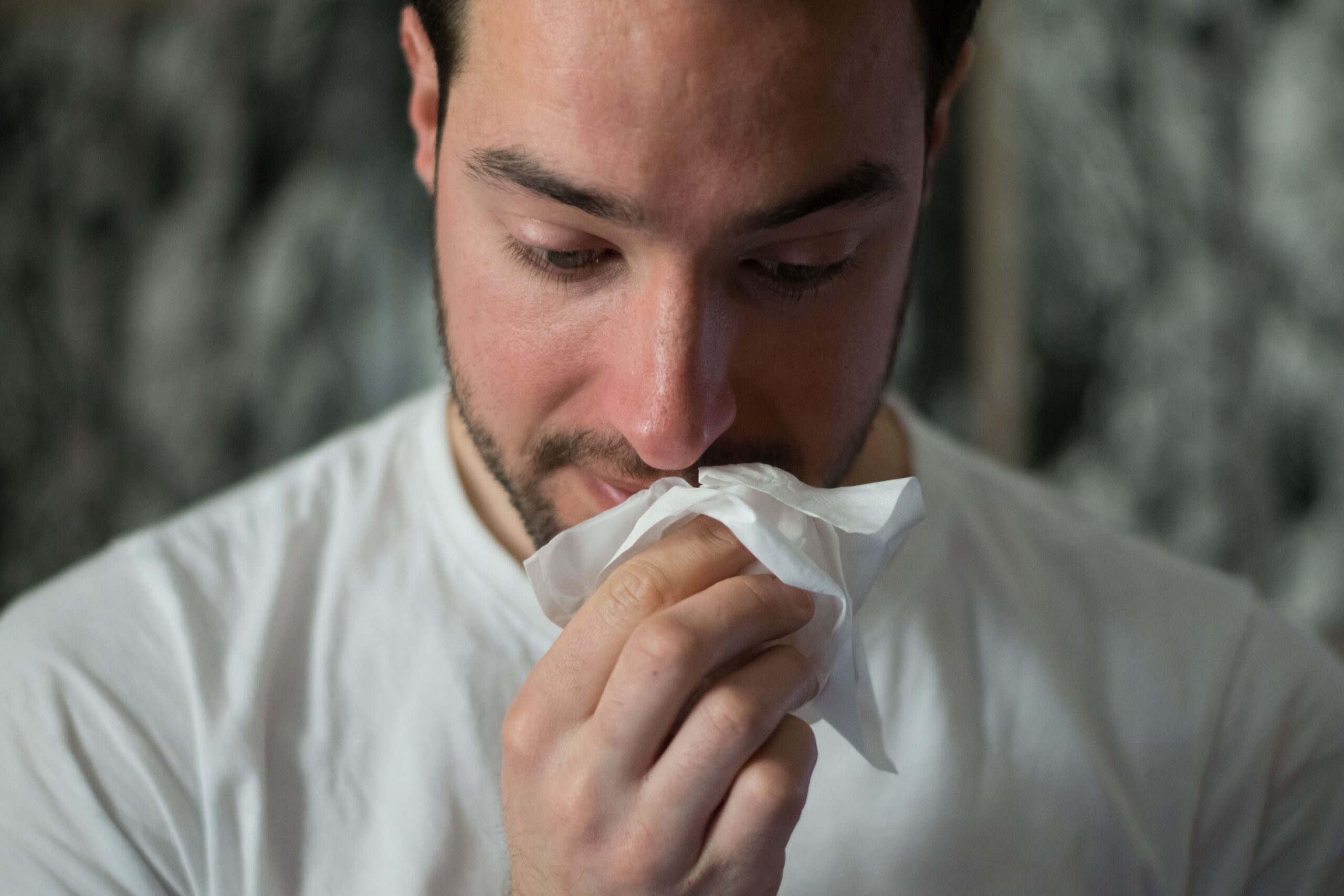Mold Toxicity is a serious issue many people suffer from and don’t even realize until symptoms are severe. Mold can be found in damp basements, showers, or your foods. If you think you may have Mold Toxicity, it’s important to see a doctor and get tested.
Candida overgrowth is a common issue that many people suffer from. Candida is a type of yeast that lives in your gut. When it’s in balance, it’s not a problem. However, it can cause serious issues like fatigue, brain fog, and even joint pain when it becomes overgrown.
You can also do certain things to help your body recover from candida overgrowth and mold toxicity, like following a Mold Toxicity Diet. This article will explore the symptoms of these conditions and a recovery plan if you’re suffering from mold toxicity or candida overgrowth symptoms.
What is Mold Toxicity?
Mold toxicity is a serious health issue caused by exposure to mold. Mold can be found in damp or wet areas, like basements, pipes, showers, or even food. When you’re exposed to mold, it can cause a range of symptoms like fatigue, headaches, and even memory problems.
Mold toxicity can be caused by exposure to mold spores and biotoxins. Biotoxins are poisonous chemicals manufactured by living organisms, such as molds or bacteria. Mold toxicity can occur when exposed to mold spores through inhalation, skin contact, or ingestion.
Mold toxicity can also occur if you have long-term exposure to moldy environments or objects. This can cause a condition called Chronic Inflammatory Response Syndrome (CIRS). CIRS is a multi-symptom condition that boils down to hypersensitivity to molds and mycotoxins.
What are the Symptoms of Mold Toxicity?
The symptoms of mold toxicity can vary depending on the person and the amount of exposure they’ve had to mold. However, there are a few common symptoms people experience when they have mold toxicity.
Symptoms of mold toxicity can include:
- Persisting fatigue
- Allergy responses
- Respiratory symptoms like nasal congestion, runny nose, sneezing, shortness of breath, and more
- Symptoms that affect the brain including memory loss or brain fog
- Diarrhea or vomiting
- Abdominal pain, and
- Inflammation
These symptoms can range from very mild to severe, lasting for weeks, months, or even years. If you think you may have mold toxicity, it’s important to see a doctor and find the source or sources of mold that may affect your health.
How Do You Get Mold Toxicity?
Biotoxins are poisonous compounds produced by living organisms, such as molds or bacteria. Biotoxins like mold cause various symptoms like fatigue, headaches, and even memory problems.
Mold toxicity can occur when exposed to mold spores through inhalation, skin contact, or ingestion. Inhalation is the most common way people are exposed to mold spores. Typically, mold toxicity will occur when you have long-term exposure via inhalation, contact, or ingestion.
You can get mold toxicity from indoor and outdoor exposure to mold spores. Exposure to mold spores of biotoxins can cause Mold toxicity, commonly induced by inhalation, skin contact, or ingestion in the presence of mold spores.
What Happens to Your Body?
Mold toxicity can cause a range of symptoms that affect different parts and systems of your body. When you’re first exposed to mold, your immune system will respond to the presence of mold spores.
With mold toxicity, your body will produce antibodies to fight off the mold spores. The process can cause inflammation, leading to various symptoms like fatigue, headaches, and even memory problems.
Sneezing, runny nose, symptoms of allergies like sore throat, runny nose, watery eyes, and congestion are also common physical symptoms of mold toxicity. Mold toxicity can also depress your immune system, making you more susceptible to other infections and illnesses. In some cases, mold toxicity can even be fatal.
What is Candida?
Our bodies are home to millions of yeast cells. Most of the time, these yeast cells live in harmony with other microorganisms in our gut, contributing to a healthy digestive system.
Candida is a type of yeast that can cause an infection in your skin, mouth, or digestive tract. Candida normally lives on your skin or inside your body without any problems, but if the environment changes, candida can grow too much and cause an infection.
The symptoms of candida overgrowth can vary depending on the person and the severity of their infection. There are multiple symptoms that many people experience when they have candida overgrowth.
Symptoms of candida overgrowth can include:
- Chronic fatigue
- Muscle or joint aches and pains
- Recurring genital or urinary tract infections
- Digestive issues
- Skin and nail infections
What Do You Do?
If you think you may have mold toxicity or candida overgrowth, it’s important to see a doctor. Mold toxicity and candida overgrowth can be treated, but it’s important to get a diagnosis from a doctor to be sure to treat the underlying cause of your symptoms.
It’s important to avoid exposure to mold spores as much as possible. This means avoiding moldy environments and objects, as well as staying away from areas where there is a lot of dust. You should also avoid activities that can disturb mold spores, such as sweeping or vacuuming.
How Do You Recover From Mold Toxicity?
There is no one-size-fits-all answer to this question, as the best way to recover from mold toxicity will vary depending on the person and the severity of their symptoms. However, some general tips can help you on your road to recovery.
Mold toxicity is often treated with a combination of avoidance of mold exposure via mold toxicity or an anti-candida diet and antifungal medications. If you have candida overgrowth, your doctor may recommend a Candida diet as part of your treatment plan.
Mold Toxicity Diet & Anti-Candida Diet:
A mold toxicity diet or anti-candida diet aims to avoid foods that promote the growth of yeast and candida in your body. These diets are often very similar, as many of the foods that promote yeast growth also promote the growth of candida. Some common food triggers for mold toxicity and candida overgrowth include:
- Sugar and artificial sweeteners
- Refined carbohydrates
- Yeast-containing foods
- Dairy products
- Alcohol
- Coffee and tea
- Avoid added sugars
- Gluten
It’s important to note that everyone is different, and you may find that you can tolerate some of these foods while others trigger your symptoms. It’s important to experiment with different foods and find out what works for you.
In addition to avoiding food triggers, you may also want to eat more probiotic-rich foods, such as yogurt, sauerkraut, and kimchi. Probiotics can help restore the balance of good bacteria in your gut, which can help control candida growth. You should also:
- Eat a diet of healthy proteins and fats
- Avoid gluten
- Minimize your alcohol intake
- Drink plenty of water
- Eat fruits that are low in sugar and non-starchy vegetables
Candida Supplements + Mold Toxicity Supplements:
Supplements can be a helpful addition to your mold toxicity or candida diet. Some common supplements that are often recommended for these conditions include:
Chlorella Tablets
Chlorella is a type of green algae rich in chlorophyll. Chlorophyll is a substance that can help detoxify your body by binding to toxins and helping to remove them from your system. Chlorella tablets can also help boost your immune system.
Bentonite Clay Tablets
Bentonite clay is a type of clay that is made from volcanic ash. It’s often used as a natural detoxifier, as it can help bind to toxins and remove them from your body.
Activated Charcoal
Activated charcoal is a type of carbon treated to make it more porous. This makes it more effective at binding toxins and removing them from your system. Activated charcoal can be taken in supplement form or used topically.
Pectaclear
PectaClear is shown in studies to assist with safely eliminating and detoxifying environmental pollutants like pesticides, dioxins, and other poisons from the body. PectaClear is also effective in binding to and eliminating mercury, lead, and other heavy metals.
Florastor
Florastor aids in the strengthening of your digestive balance and immunological defense by helping to support a healthy immune system. With a unique probiotic strain, Florastor can help to maintain digestive balance and normal bowel function.
Vitamin C
Vitamin C provides many benefits, including boosting your immune system. It is also a potent antioxidant that can help protect your cells from damage.
Vitamin K
Vitamin K is a vital nutrient for blood clotting. It is also important for bone health and has been shown to have anti-inflammatory properties.
Grape Seed Extract
Grape seed extract may help to support the health of vascular, bone, kidney, brain, and other tissues by boosting the immune response to oxidative and metabolic stress.
Colloidal Silver Argentyn 23 Nasal Spray + Clear nasal spray bottle
The decongestant in this nasal spray thins mucus in the nose and sinuses, relieving congestion. Colloidal Silver Argentyn 23contains over 98% bio-active silver ions, plus silver nanoclusters that help cleanse nasal passages
Conclusion
The mold toxicity diet and candida diet are both important for people who suffer from these conditions. These diets can help control the growth of yeast and candida in your body and may also help relieve some of your symptoms. In addition to following a healthy diet, you may also want to supplement your diet with probiotics, vitamins, and minerals.
If you think you may have mold toxicity or candida infection, it’s important to speak with a trained professional. We recommend seeing a medical professional specializing in mold toxicity and recovery. See a medical professional that understands your situation.
Sources
- IntegrumLiving: Our Story of Mold Toxicity
- The Candida Diet: 11 Symptoms of Candida Overgrowth
- Crush Candida: The Candida Diet Protocol
- The Ruscio Institute for Functional Medicine: Mold Toxicity, Mold Illness, and Chronic Symptoms
- Healthline: How Long Does it Take to Get Sick from Mold Exposure
- Healthline: How to Detox Your Body From Mold
- Healthline: 7 Symptoms of Candida Overgrowth





